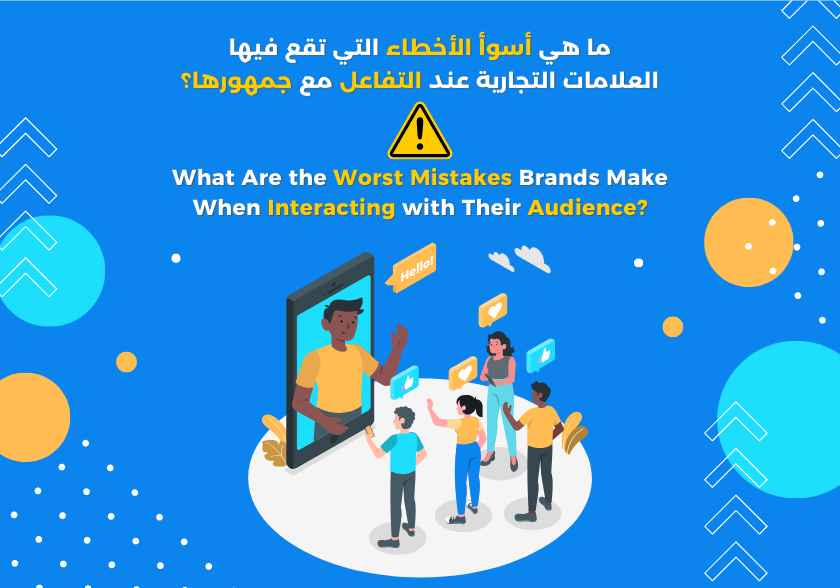- Iraq,Erbil / Istanbul,Türkiye
- info@socigate.com

What Are the Worst Mistakes Brands Make When Interacting with Their Audience? 🤔
In today's digital marketing world, effective communication with your audience is essential to build a strong and lasting relationship with your customers. However, unfortunately, many brands make mistakes that negatively affect their connection with their audience. Are you ready to learn about these common mistakes? In this article, we will discuss the top mistakes and provide you with practical tips to avoid them.
One of the biggest mistakes brands make is not listening to their audience. While you might be busy promoting your products and services, if you’re not paying attention to what your audience is saying, you miss out on valuable opportunities to improve your services or products.
Solution: Listen to their feedback, whether it's positive or negative. Use surveys, direct messages, and reviews to analyze their opinions. Customers who share their thoughts are a valuable source for improving what you offer.

While automated responses can be a quick way to interact, they may make the customer feel unappreciated or like their issue isn't being taken seriously.
Solution: Try to make your responses as personalized as possible. Even if the message is automated, try adding a personal touch to make the customer feel valued. Don’t hesitate to use the customer’s name when responding.

One of the worst mistakes that can ruin your brand’s reputation is ignoring customer complaints. When customers feel ignored or unheard, they’re likely to turn to your competitors.
Solution: Never ignore complaints or inquiries. Respond quickly and always be honest and transparent when trying to resolve the issue. Customers appreciate brands that acknowledge their mistakes and work to correct them.

Your communication with your audience should always be honest and down-to-earth. Sometimes, brands use complex or condescending language that makes customers feel unwelcome or unable to understand what’s being said.
Solution: Use simple and clear language. Be close to your audience in the way you speak, and avoid complex jargon. Your audience prefers dealing with a brand that shows genuine interest.

Nothing wastes opportunities more than inconsistent interaction with your audience. Some brands may interact actively at times, only to stop suddenly, creating a chaotic situation with customer expectations.
Solution: Keep up a continuous and relevant interaction through various social media channels. Set regular times to engage with your audience, whether it’s by responding to comments or posting content that your audience engages with.

Sometimes, brands focus too much on promotion without offering real value to their audience. If your brand’s message is limited to selling products or services without offering useful or engaging content, you may struggle to capture your audience’s attention.
Solution: Always aim to provide real value to your audience. Offer educational content, solutions to their problems, or even simple tips in your field. When your audience feels that you care about their benefit, they will trust your brand more.

Interacting during sensitive or crisis moments can be critical in building or breaking a relationship with your audience. If you don’t handle certain important issues sensitively, your brand may seem indifferent or irresponsible.
Solution: Be ready to respond quickly and appropriately during crises or special circumstances. Acknowledge the issues and show that you care about helping your customers and offering tangible solutions.

Avoiding these mistakes requires you to always stay close to your audience and listen to them sincerely. If you focus on providing real value and improving their experience with your brand, you will build a strong relationship that lasts.
Interacting with your audience is not just about quick responses or promotional campaigns. It's about building a relationship based on trust and mutual respect. If you can avoid these mistakes and provide effective and impactful interaction, your brand will always remain at the heart of your audience.